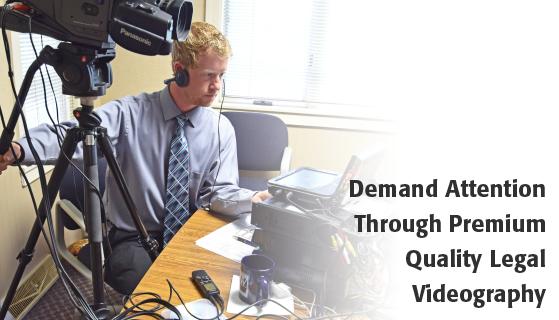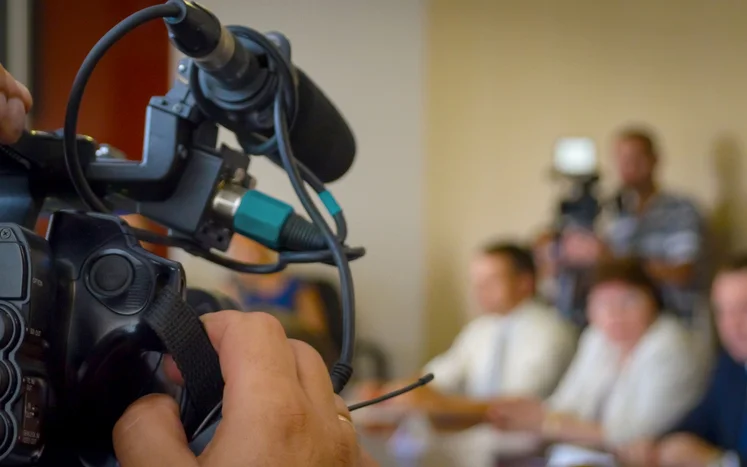Recognizing the Significance of Videography in Legal Procedures
The integration of videography into legal proceedings has emerged as a substantial aspect in the discussion and interpretation of proof. By capturing aesthetic components such as body language and facial expressions, videography improves the narrative surrounding witness testimonies and can exceptionally affect court understandings.
Duty of Videography forthcoming
Videography plays an increasingly vital function in lawful process, working as a powerful tool for providing evidence. The combination of video recordings into the lawful structure permits a much more vibrant depiction of facts, allowing jurors and judges to imagine occasions as they took place. This visual documentation can encompass a variety of products, consisting of monitoring video, taped witness testaments, and expert presentations, every one of which can substantially boost the evidentiary landscape.
One of the primary advantages of videography is its ability to catch subtleties that may be lost in created accounts. Facial expressions, body language, and situational context can provide important understandings, aiding to share feelings and purposes that message alone can not. The usage of video clip proof fosters a more appealing courtroom experience, potentially aiding jurors in recognizing intricate cases.
As innovation breakthroughs, the quality and ease of access of videographic proof have improved, making it an indispensable component of modern legal methods. Courts progressively recognize the worth of video clip as a trustworthy source of details, motivating attorneys to adjust their approaches for proof discussion. Ultimately, videography serves not just to show truths but also to enhance the total honesty of the judicial procedure.

Enhancing Reputation and Clarity
A significant benefit of integrating videography in legal proceedings is its capability to enhance both trustworthiness and quality of evidence presented in court. Videographic proof can capture subtleties that written records might forget, such as tone, body language, and context. This graph permits judges and courts to much better understand the conditions bordering the instance, thereby promoting a more accurate understanding of the occasions concerned.

Additionally, the clarity paid for by videography decreases the chance of false impression that can occur from textual descriptions. This accuracy is specifically important in intricate situations, where details can be conveniently misinterpreted. Inevitably, by presenting evidence in an aesthetically accessible style, videography not only enhances the stability of the judicial process yet likewise supports informed decision-making by those associated with legal procedures.
Effect On Jury Assumption
The incorporation of videographic proof significantly influences court perception, commonly causing more engaged and informed deliberations. Jurors are normally extra responsive to visual information, which can enhance their understanding of complex instances. Videography provides realities in a fashion that is both compelling and available, permitting jurors to get in touch with the evidence on a much more personal degree.
Additionally, the capability to witness events as they happened can stimulate emotional reactions that created records or spoken testimonies may fail to evoke. This psychological engagement can lead jurors to develop stronger viewpoints regarding the credibility of witnesses and the overall story of the situation. The aesthetic representation of proof also aids in making clear obscurities, making it easier for jurors to comprehend the context and relevance of the my review here info presented.
Moreover, videography can act as a powerful tool for storytelling, allowing attorneys to build an influential narrative that resonates with the court. When jurors can imagine circumstances and witness vital moments, their capacity to purposeful thoughtfully and reach a well-informed judgment is dramatically enhanced, ultimately influencing the outcome of legal process.
Best Practices for Legal Videography
Implementing finest practices in legal videography is necessary for making sure that aesthetic evidence is both effective and credible in the courtroom. Select competent specialists that specialize in lawful videography to ensure the technical high quality of the recordings. This consists of making use of high-resolution cams and specialist sound tools to catch clear visuals and audio.
2nd, maintain proper paperwork throughout the recording process. This includes producing a detailed log that consists of timestamps, summaries of the web content, and the identifications of all individuals present. Such paperwork can strengthen the credibility of the video.

Additionally, take into consideration using appropriate modifying strategies. While it is critical to preserve the original content, minor modifications for clearness-- such as boosting audio levels-- can enhance the overall discussion without modifying the material.
Future Trends in Legal Videography
As legal videography continues to develop, arising modern technologies and techniques are shaping the future landscape of visual proof in the court room (Legal Videography). One substantial fad is the assimilation of high-definition and 4K video quality, boosting the clearness and detail use this link of tape-recorded testimonies and proof. This better resolution help jurors in adequately assessing the trustworthiness of witnesses and the nuances of the offered products
Furthermore, the usage of man-made intelligence (AI) in video clip evaluation is gaining grip. AI tools can help in determining essential minutes in footage, creating transcripts, and even analyzing non-verbal communication, which gives much deeper understandings right into witness reputation. Furthermore, digital fact (VIRTUAL REALITY) and boosted truth (AR) are positioned to transform exactly how evidence exists, enabling jurors to immerse themselves in crime scenes or scenarios, consequently cultivating an extra profound understanding of the context.
Conclusion
In recap, videography works as an important device in legal proceedings, enhancing the presentation of evidence and improving the overall great post to read understanding of instances. By capturing non-verbal cues and boosting the reputation of witness accounts, videography considerably influences court understanding and decision-making procedures - Legal Videography. Sticking to ideal techniques makes sure the performance of legal videography, while arising fads assure to more augment its duty in the judicial system, inevitably cultivating a much more informed and engaged legal atmosphere
Videography plays a progressively vital duty in lawful proceedings, serving as a powerful medium for providing proof.A substantial benefit of including videography in lawful procedures is its capability to improve both trustworthiness and clearness of evidence presented in court. Ultimately, by presenting evidence in a visually accessible format, videography not just reinforces the stability of the judicial process but also sustains informed decision-making by those involved in legal proceedings.
In recap, videography offers as a crucial device in lawful process, improving the discussion of proof and enriching the general understanding of situations. Legal Videography. Adhering to ideal methods guarantees the efficiency of legal videography, while arising patterns promise to more boost its function in the judicial system, inevitably cultivating a much more informed and engaged legal setting